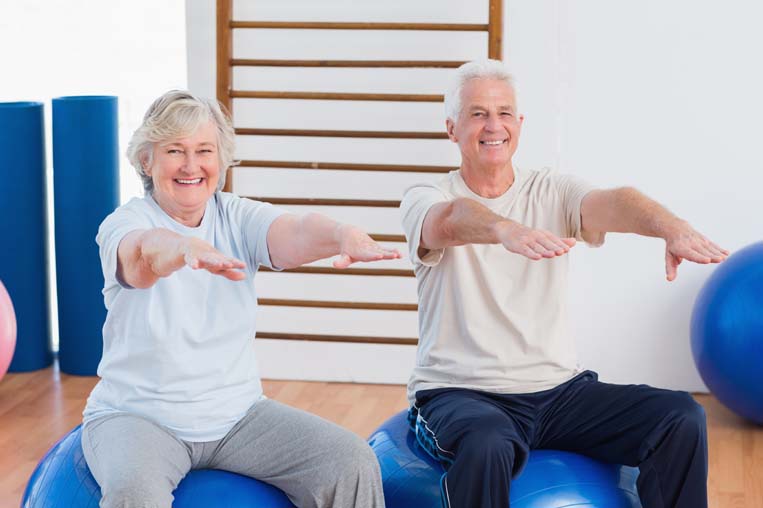Hopefully everyone had an enjoyable and relaxing holiday season. We are now in mid-January, and I’m starting to see evidence of New Year’s resolutions to exercise regularly, eat more vegetables, drink less caffeine, get organized, save more money, and on and on. I’ve set some of my own resolutions, including some of those mentioned above. But now—2 weeks in—I’m trying to figure out how to be committed to them and change my behavior.
One behavior change I figured out for myself about 18 months ago, and thoroughly recommend, is regular exercise. I became motivated after a serious illness in an older family member made me realize that improving my health and fitness could protect me as I age. I also feel the need to set a good example for my “tween-aged” children.
It has been hard, I won’t deny that. Very hard. Fortunately, new evidence on the many different benefits of exercise is coming out all the time, which has helped me to stick to my exercise routine.
Whether you are thinking about recommending regular exercise to patients or family members—or just fulfilling your own new year’s resolutions—it may help you, as it did me, to be aware of all the benefits.
Effects of Exercise:
May Improve
- mental function and mood
- balance, flexibility, and physical strength
- management and control of chronic diseases like high blood pressure, diabetes, and arthritis
- immune function
- muscle tone and appearance
- sleep
- energy and ability to accomplish everyday tasks
May Decrease
- stress
- weight
- risk of chronic diseases such as heart disease, diabetes, osteoporosis, cancer, sarcopenia, and frailty
- risk of falling
- mortality
- chronic pain
- joint stiffness, limited mobility, dependence on caretakers
While these are commonly known benefits of exercise for most people, there is research suggesting exercise can have benefits related to specific diseases and biological age markers, and it is especially important as we age. Recommendations for the amount of physical activity needed is the same for adults of all ages, including older adults—a minimum of 150 minutes each week of moderate intensity exercise or 75 minutes of vigorous activity (an important note: any physical activity has been shown to be better than none!). Aerobic activities include walking, swimming, water aerobics, bicycle riding, and dancing.
Older adults should also do muscle strengthening activities that involve all the major muscle groups. Examples include calisthenic exercises, weight machines, exercise bands, or hand-held weights. Safety is a consideration, however, most exercises can be modified to an individual’s fitness and/or ability level so most adults should be able to incorporate some kind of routine exercise into their lifestyle.
The many benefits of exercise prompted the National Institute on Aging (NIA) to develop a program for older adults called Go4Life to help older adults and their caregivers to begin and maintain an exercise routine. The program includes background information on the importance of exercise, how to start an exercise program and set appropriate goals, sample exercises and activities, outcomes to look for, and healthy eating. A variety of other programs have also been developed and tested to help older adults reap the benefits of exercise, such as EnhanceFitness, A Matter of Balance, and the Stepping On program.
We often need motivation and help to start and maintain an exercise program—everyone likes to have a cheerleader! Health care professionals can be sources of advice and support. Here are a few tips when recommending physical activity, especially to older patients.
- Help patients set specific goals. For example, “Walk 3 days per week for 20 minutes,” adjusting goals according to ability and current fitness level.
- Help patients identify a support system – spouse, family, friends, or neighbors. Having an “exercise buddy” can be very helpful and motivating.
- Offer patients positive reinforcement and assure them that they do have the ability not only to exercise in some capacity but to experience the benefits.
- Recognize that there may be barriers to exercise, either real or perceived, and help patients identify those barriers and develop specific strategies to overcome them.
As health professionals, we have a duty to encourage (or even prescribe) exercise to patients. We owe ourselves and our families that commitment as well.

